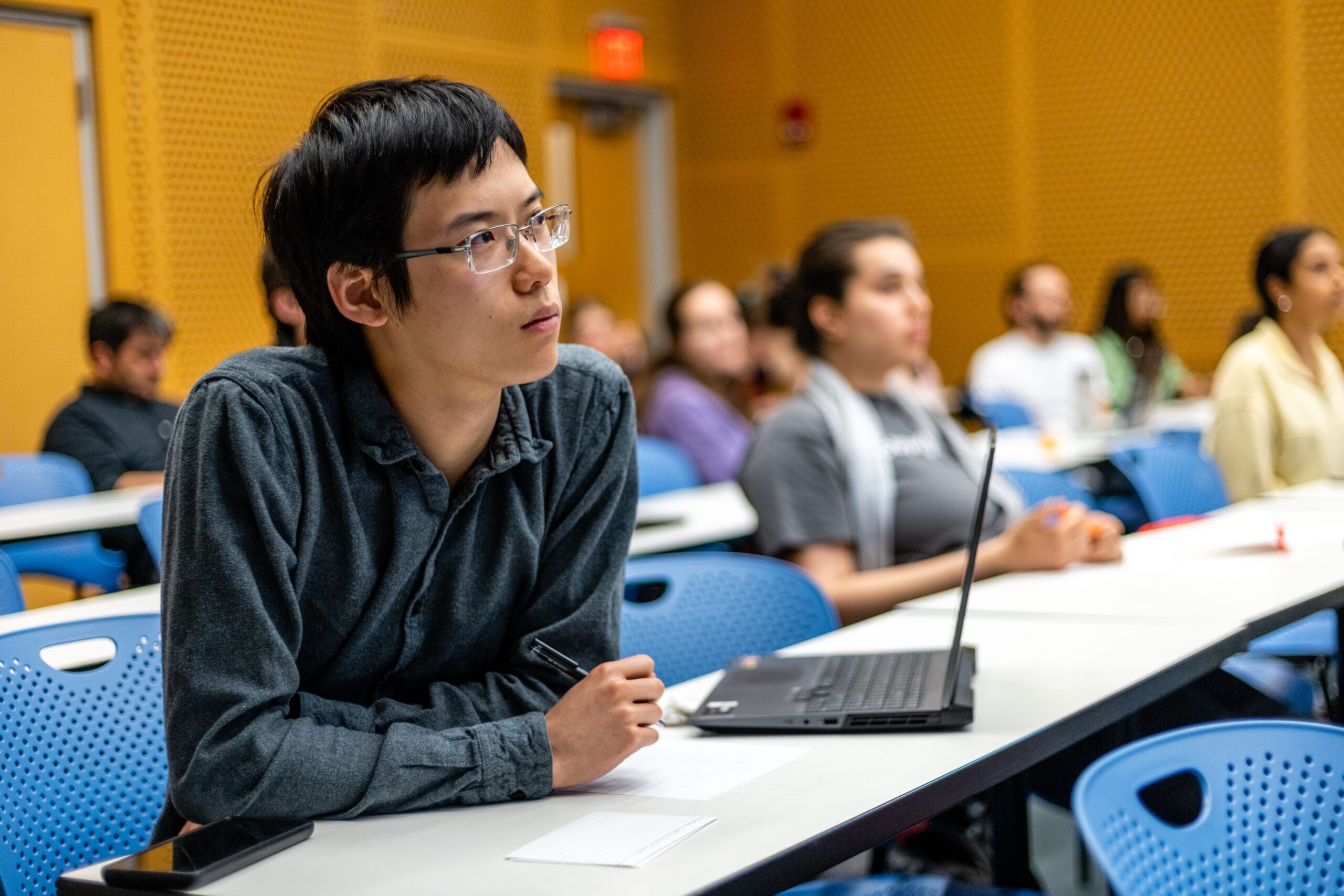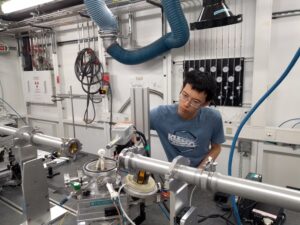Student Spotlight: Investigating Photo-Modulated Catalytic Reactions for Clean Energy Applications
October 13, 2023

Jade observing a lecture during the classroom component of the Scholars Program.
MIT undergraduate student Jade Chongsathapornpong recently completed the MCSC Climate & Sustainability Scholars Program, where he had the opportunity to conduct research alongside MIT peers and faculty. Throughout the 2022-2023 academic year, Jade investigated, alongside Professor Harry Tuller and other MIT researchers, photo-modulated catalytic reactions for clean energy applications. More specifically, his work built off a study, published in Nature, conducted by a team of MIT researchers, that presented an explanation for how surface contaminants improve or degrade the oxygen exchange performance of a metal oxide.
Prior to the Scholars Program, Jade had the opportunity to work with the MCSC to complete his UROP project. Jade’s UROP project was connected to MCSC’s focus area of Carbon Capture & Storage (CCS). Working with former Impact Fellow Glen Junor, Jade explored Carbon Capture literature and hypothesized that intramolecular hydrogen bonding in certain flexible molecules magnifies the entropy penalty of CO2 binding, and may have a significant effect on CO2 capacity. Jade’s perspective and research are in his report titled, ‘A Proposed Study of Hydrogen Bond Entropic Contributions to Chemical Carbon Capture.’
Through the Scholars Program, Jade worked to find evidence for or against this explanation. One of the assignments posed to the Scholars was to select an audience to convey their research to — Jade chose to present his research in an academic paper and create videos that convey the less technical background that motivated the project. Both these deliverables offered him the opportunity to tailor his presentation to suit the needs of his audience.
Why did you convey your research in a series of short videos?
The reasons were twofold. First, I had never made this sort of short video before, nor do I consume much short-form media myself. It was going to be an odd exercise as an amateur videographer/editor/science communicator, which I think I somewhat succeeded at—”Why fuel cells?” won MIT’s STEMVault video contest for breaking down technical topics to middle schoolers!
Second, I have friends back home who ask the what and why of my research. While talking, I realized most people don’t know what fuel cells are, nor that ceramics (often oxides) can have useful electronic/ionic properties. Short-form seems very accessible to audiences. It forces me to simplify and distill things down and cut out knowledge dependencies where I can. Now, I can share these videos, and people have in digestible form the background and motivation they need for me to explain my research.
When it comes to the research you've worked on so far at MIT, what are you most proud of?
I think what I’m most proud of was my previous summer project, also with the MCSC and former Impact Fellow Glen Junor, where I learned about the process of navigating scientific literature and looking for research ideas. I thought it was cool going in with next to nothing in terms of ideas and eventually coming out with a bill of materials for a little experiment to try in the lab, motivated by a thread drawn through many, many papers read.
What did you gain from the MCSC Scholars Program?
The most important long-term thing I got from the program was a network of other people interested in sustainability, all with very different perspectives ranging from business to chemistry, and computer science to policy. A close second would be insights gleaned from the diverse array of speakers we had invited. And, of course, we can’t forget Professor Olivetti’s occasional deliveries of homemade cookies to class.
What was your favorite aspect of the research process?
Theory will only take you so far. Before an experiment, it’s exciting to have some ideas while truly not knowing what you’ll find. In short, the feeling of exploring something new. This has been my experience with my current work in France, employing synchrotron radiation to examine some poorly understood aspects of another oxide material. Actually, my Scholars Project inspired me to continue working in materials science, and on oxides with possible energy applications in particular.

Photo of Jade adjusting a detector on a beamline at the ESRF in France
